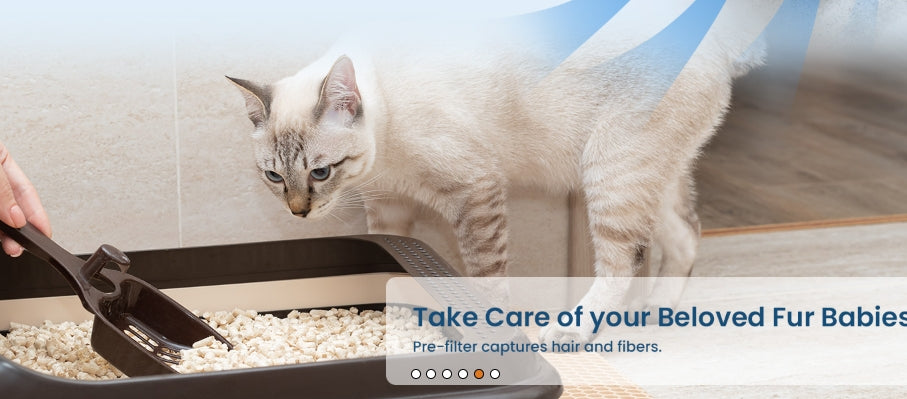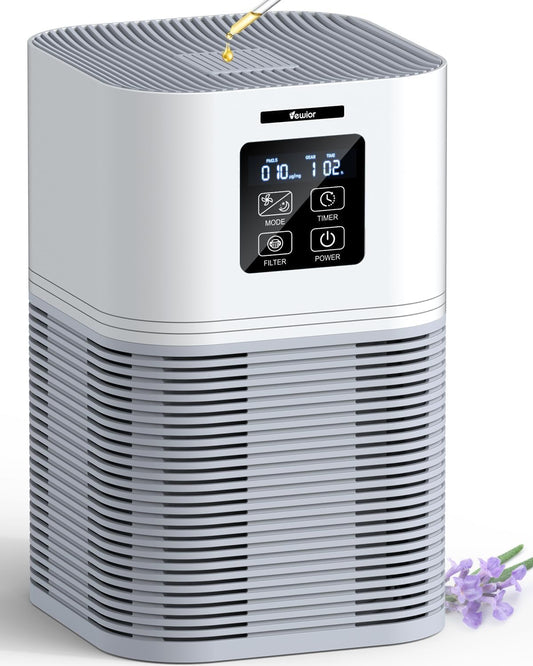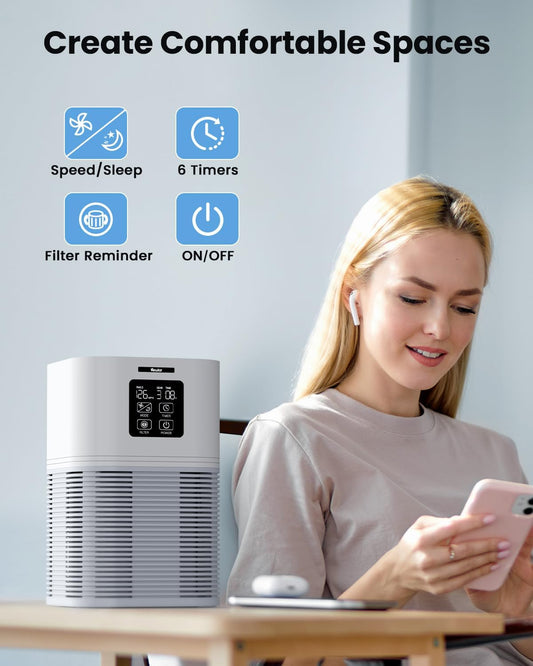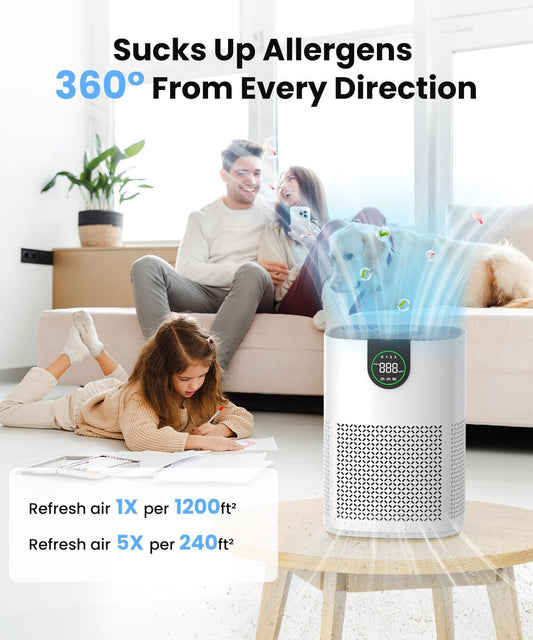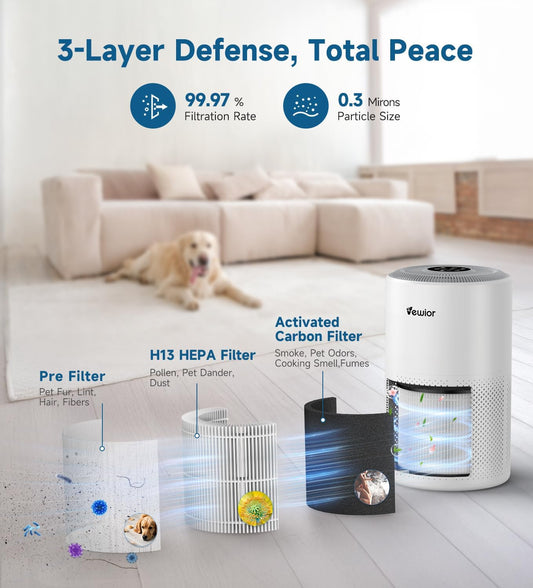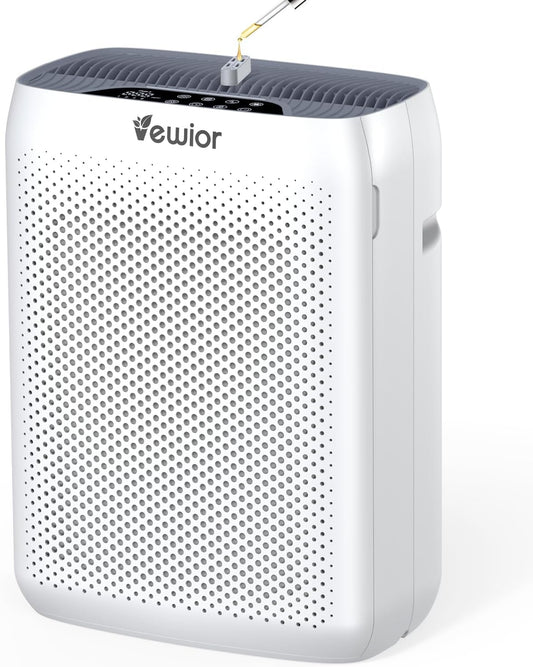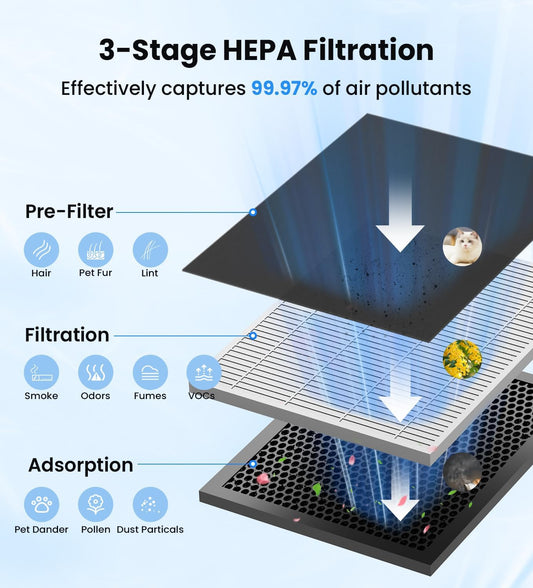For pet owners, furry companions bring endless joy—but they also bring pet hair, dander, and odors that can linger in your home. If you’re constantly battling sneezing fits, sticky furniture, or a stubborn “pet smell,” you might wonder: Can an air purifier really tackle pet-related air quality issues? Let’s explore how air purifiers work for pet households and what features to prioritize for a fresher, cleaner home.
The Hidden Challenge of Pet Hair and Dander
Pet dander (microscopic skin flakes) is a common allergen, triggering reactions in 10–20% of people. Even if you’re not allergic, pet hair traps dust, pollen, and outdoor pollutants, while odors from urine, saliva, or litter boxes can make your home feel less inviting. Traditional vacuuming and cleaning often miss airborne particles, which is where air purifiers step in.
How Air Purifiers Address Pet-Related Pollutants
1. HEPA Filters: Trapping Dander and Hair
True HEPA filters capture 99.97% of particles as small as 0.3 microns, including pet dander, hair, and dust. For homes with heavy shedders, look for purifiers with a pre-filter that traps larger hairs before they clog the HEPA layer.
2. Activated Carbon: Eliminating Odors
Pet odors come from proteins in urine, dander, and saliva. A thick activated carbon filter adsorbs these organic compounds, neutralizing smells instead of masking them.
3. High Airflow Rates
Pets spread allergens quickly. Choose a purifier with a high Clean Air Delivery Rate (CADR) for dust and pollen to cycle air multiple times per hour, especially in larger rooms.
Key Features for Pet-Friendly Air Purifiers
Washable Pre-Filter: Extends the life of your HEPA filter by catching fur and lint.
Ozone-Free Operation: Avoid ionizers, which can irritate pets’ sensitive respiratory systems.
Robust Construction: Pets may knock over lightweight units—opt for stable designs or wall-mountable models.
Smart Sensors: Detects particle spikes (e.g., after grooming sessions) and auto-adjusts fan speed.
Maximizing Your Air Purifier’s Effectiveness
Place It Strategically: Position the purifier in your pet’s favorite area (e.g., near their bed or litter box).
Groom Pets Regularly: Brush pets outdoors to reduce loose hair and dander indoors.
Vacuum Frequently: Use a HEPA-equipped vacuum to remove settled hair and allergens from floors.
Wash Pet Bedding Weekly: Hot water kills dust mites and removes dander buildup.
Limitations to Keep in Mind
Air purifiers can’t do all the work:
- They won’t eliminate odors from accidents—clean stains promptly with enzymatic cleaners.
- Large amounts of airborne fur may require frequent filter changes.
- Pets with severe allergies may still need veterinary-approved solutions.
Final Thoughts
Air purifiers are a powerful tool for reducing pet-related allergens and odors, but success depends on choosing the right features and pairing them with good hygiene habits. By prioritizing HEPA filters, odor control, and durable design, you can create a cleaner, healthier space for both your family and your pets.

